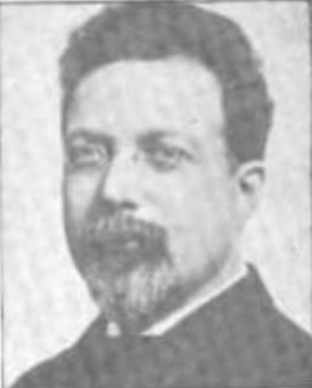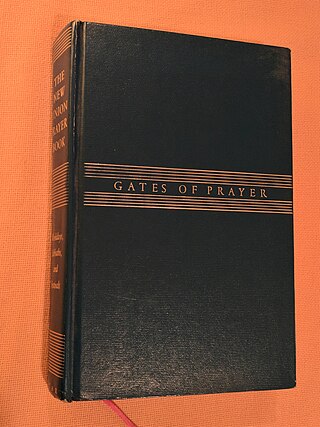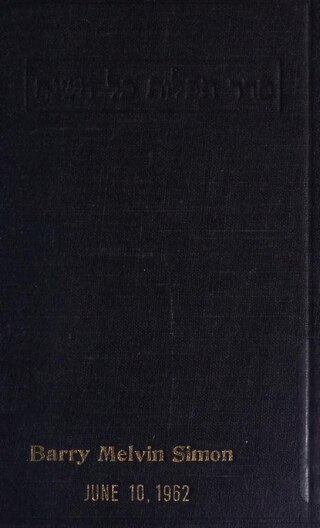
A siddur is a Jewish prayer book containing a set order of daily prayers. The word siddur comes from the Hebrew root ס־ד־ר, meaning 'order.'

The machzor is the prayer book which is used by Jews on the High Holy Days of Rosh Hashanah and Yom Kippur. Many Jews also make use of specialized machzorim on the three pilgrimage festivals of Passover, Shavuot, and Sukkot. The machzor is a specialized form of the siddur, which is generally intended for use in weekday and Shabbat services.
The Union for Reform Judaism (URJ), formerly known as the Union of American Hebrew Congregations (UAHC) until 2003, founded in 1873 by Rabbi Isaac Mayer Wise, is the congregational arm of Reform Judaism in North America. The other two arms established by Rabbi Wise are the Hebrew Union College-Jewish Institute of Religion and the Central Conference of American Rabbis. The current president of the URJ is Rabbi Rick Jacobs.

Simeon Singer (1846–1906) was an English Rabbi, preacher, lecturer and public worker. He is best known for his English translation of the Authorised Daily Prayer Book, informally known as the "Singer's Siddur".

Isaac Mayer Wise was an American Reform rabbi, editor, and author. At his death he was called "the foremost rabbi in America".

Isidor Kalisch was an American reform rabbi and writer.

David Einhorn was a German rabbi and leader of Reform Judaism in the United States. In 1855, he became the first rabbi of the Har Sinai Congregation in Baltimore, the oldest Jewish-American congregation affiliated with the Reform movement since its inception. While there, he created an early American prayer book for the congregation that became one of the progenitors of the 1894 Union Prayer Book.

The history of the Jews in Cincinnati occupies a prominent place in the development of Jewish secular and religious life in the United States. Cincinnati is not only the oldest Jewish community west of the Allegheny Mountains but has also been an institutional center of American Reform Judaism for more than a century. The Israelite, the oldest American Jewish newspaper still (2019) being published, began publication in Cincinnati in 1854.

Congregation Beth Elohim, also known as the Garfield Temple and the Eighth Avenue Temple, is a Reform Jewish congregation and historic synagogue located at 274 Garfield Place and Eighth Avenue, in the Park Slope neighborhood of Brooklyn in New York City, New York, United States.

Isaac Leeser was an American Orthodox Jewish religious leader, teacher, scholar and publisher. He helped found the Jewish press of America, produced the first Jewish translation of the Bible into English, and helped organize various social and educational organizations. He is considered one of the most important nineteenth century American Jewish personalities. He was "fiercely opposed" to Reform Judaism and was regarded as one of the most important "orthodox" rabbis of his era. Leeser is regarded as a forerunner by both Modern Orthodox Judaism and Conservative Judaism.
Hermann Kohlmeyer was an American rabbi in charge of Congregation Shangarai Chasset in New Orleans, Louisiana.

David Philipson was an American Reform rabbi, orator, and author.
The Union Prayer Book was a Siddur published by the Central Conference of American Rabbis to serve the needs of the Reform Judaism movement in the United States.

Gates of Prayer, the New Union Prayer Book (GOP) is a Reform Jewish siddur that was announced in October 1975 as a replacement for the 80-year-old Union Prayer Book (UPB), incorporating more Hebrew content and was updated to be more accessible to modern worshipers. The prayer book was officially approved by the Joint Commission on Worship of the Union of American Hebrew Congregations and the Central Conference of American Rabbis. In 1978, CCAR released the complementary Gates of Repentance, The New Union Prayerbook for the Days of Awe machzor for the High Holy Days.

Mishkan T'filah—A Reform Siddur is a prayer book prepared for Reform Jewish congregations around the world by the Central Conference of American Rabbis (CCAR). Mishkan T'filah is Hebrew for "Dwelling Place for Prayer" and the book serves as a successor to Gates of Prayer, the New Union Prayer Book (GOP), which was released in 1975. In 2015, CCAR released the complementary Mishkan HaNefesh machzor for the High Holy Days. CCAR also produces a host of print and electronic materials to supplement the Mishkan T'filah book.
The Mizpah congregation is a Reform Jewish synagogue located at 923 McCallie Avenue in Chattanooga, Tennessee, in the United States. Founded in 1866, the congregation has erected synagogues in 1882, 1904, and its current site, in 1928 that was designated in 1979 as a Tennessee Historical Preservation Site.
Har Sinai – Oheb Shalom Congregation is a Reform Jewish congregation and synagogue located at 7310 Park Heights Avenue, in Pikesville, Baltimore County, Maryland, in the United States. Established in 1842 in Baltimore and known as Har Sinai Congregation, and in 1853 near Camden Yards as Temple Oheb Shalom, the two congregations merged in 2019 and is the oldest Reform congregation in the United States that has used the same prayer rite since its inception.

The Eretz Israel minhag, as opposed to the Babylonian minhag, refers to the minhag of medieval Palestinian Jews concerning the siddur.

Reform Congregation Keneseth Israel, abbreviated as KI, is a Reform Jewish congregation and synagogue located at 8339 Old York Road, Elkins Park, just outside the city of Philadelphia, Pennsylvania, in the United States. Founded in Philadelphia in 1847, it is the sixth oldest Reform congregation in the United States, and, by 1900, it was one of the largest Reform congregations in the United States. The synagogue was at a number of locations in the city before building a large structure on North Broad Street in 1891, until 1956 when it moved north of the city to suburban Elkins Park.

The Authorised Daily Prayer Book was an English translation of the Hebrew siddur created by Rabbi Simeon Singer. First published in 1890, it has gone through many editions, and is still used in many British Orthodox synagogues and homes.















